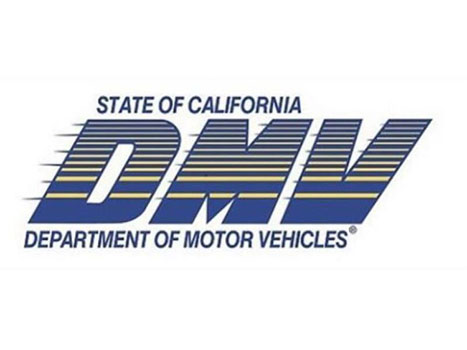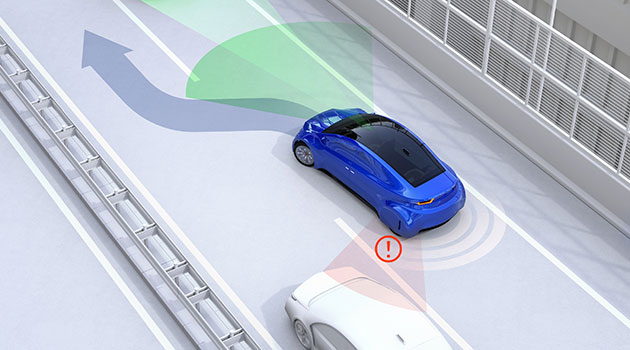Freedom and responsibility may be two sides of the same coin, but a new rule being considered by the California Department of Motor Vehicles (DMV) would shortchange car owners on both accounts.
Golden State motorists may be held liable for accidents caused by their autonomous rides—even after being stripped of the sovereignty to drive.
The idea is currently being mulled over by DMV officials as the government agency prepares to finalize the state’s first set of self-driving protocols.
And while the rule is not yet official, it may still prove influential in the emerging realm of self-driving law.
With 45 companies currently permitted to test the technology on its streets—more than anywhere else in the country—California is being widely looked at as a bellwether for all things autonomous, and should the rule curry favor there, it may become more attractive for other states to pick up.
Still, many argue the regulation should be eliminated rather than imitated, as it could open up a loophole for automakers to avoid any burden or blame for roadway incidents—and a veritable Pandora’s Box of expenses for car owners.
The Blame Game
Artificial intelligence in self-driving cars may be quickly advancing, but no matter how sophisticated the robo-chauffeurs become, they won’t be able to hold an auto insurance policy—or pay for accidents they may cause.
The lack of legal recourse against the truly responsible parties in future auto accidents leaves a gulf of accountability, and leaves it up to lawmakers to determine who’s held at fault.
In California, the idea is to replace a car owner’s obligation to drive safely with the need to take care of the car itself.
Specifically, the liability rule being discussed would alleviate automakers from blame for any incident involving an autonomous vehicle not kept up in accordance with a manufacturer’s specifications. Evidence of any maintenance or modification prescribed by a carmaker, but not followed up on by a car owner, would allow the corporations to avoid paying for any damages incurred in an accident.
The rule would theoretically apply to any type of vehicle upkeep, holding car owners accountable for anything from slightly underinflated tires to a missed oil change.
The proposal was widely reported to be taken verbatim from a suggestion made by General Motors Chief Counsel and Public Policy Director Paul Hemmersbaugh during the required public comment period on the issue—although several other prominent companies, including Google’s self-driving spin-off, Waymo, made similar propositions to the DMV. (Ironically, in previous years, Google has lobbied fastidiously—and successfully—to have autonomous technology itself considered legally tantamount to a human driver.)
Yet even as it unfetters automakers from responsibility for accidents caused by their vehicles, the rule frees the companies up to make increasingly complicated—or costly—demands on car owners.
Backseat Drivers

Should the Department of Motor Vehicles move to adopt the rule, it would essentially place car owners at the mercy of manufacturers and mechanics, according to the Consumer Attorneys of California (CAOC), a professional association of trial lawyers in the state.
In its own comments to the DMV, the group argued that the statute would create a “moral hazard” by encouraging manufacturers to come up with “unreasonable or impossible maintenance specifications” in order to more easily avoid catching blame for autonomous accidents. (Current law still allows for automakers to be held accountable for accident-causing issues with their vehicles, regardless of whether all specifications have been met by the owner.)
In an op-ed piece for San Francisco Weekly, former CAOC president Chris Dolan pointed out that the proposed legislation would also require owners to have the latest software updates installed in their vehicle—regardless of what those updates include, whether they’re found to be buggy, or whether an owner wants an upgrade at all.
And nothing in the law limits how much such maintenance requirements could cost, giving manufacturers yet another edge, Dolan said; owners will either be on the hook for potentially expensive upkeep requirements or risk being held accountable for costly accidents caused by their cars.
Still, while the proposal attempts to deal with new-age technology, it hinges on an old school idea, which may come back to haunt automakers pushing for the rule change.
What Goes Around…
The rise of self-driving cars has dovetailed neatly with the ascent of ride-hailing apps, creating a potent Silicon Valley disruption cocktail that could alter the entire automotive landscape.
With Lyft and Uber increasingly ubiquitous, experts are already predicting a future of communal driving. By 2030, an estimated 25% of all miles traversed in the country will arise from rideshares, according to research firm Boston Control Group.
By 2030, an estimated 25% of all miles traversed in the country will arise from rideshares, according to the Boston Control Group.
And as autos take over more duties behind the wheel, less humans will be able to pilot the vehicles, making the idea of individual car ownership moot, or at least boutique. Instead, many envision a future where the lion’s share of rides are autonomous—and hailed on demand.
Some developers, like tech giants Apple and Google, may already see the writing on the wall, as evidenced by a recent interest in partnering with rental car companies—and gaining access to their massive fleets of vehicles.
But as more rides come under the corporate umbrella, the companies themselves will likely be considered the auto owner in more cases, potentially putting them at risk of paying for roadway incidents after all.
Federal legislation passed by both the House of Representatives and the Senate prevent states from regulating a number of important aspects about autonomous vehicles. Insurance policy, however, is one of few impactful areas over which states will maintain some control. With the new-age technology coming closer to hitting the road every day, all eyes are now on California to see what the trendsetting state will do with the opportunity.
